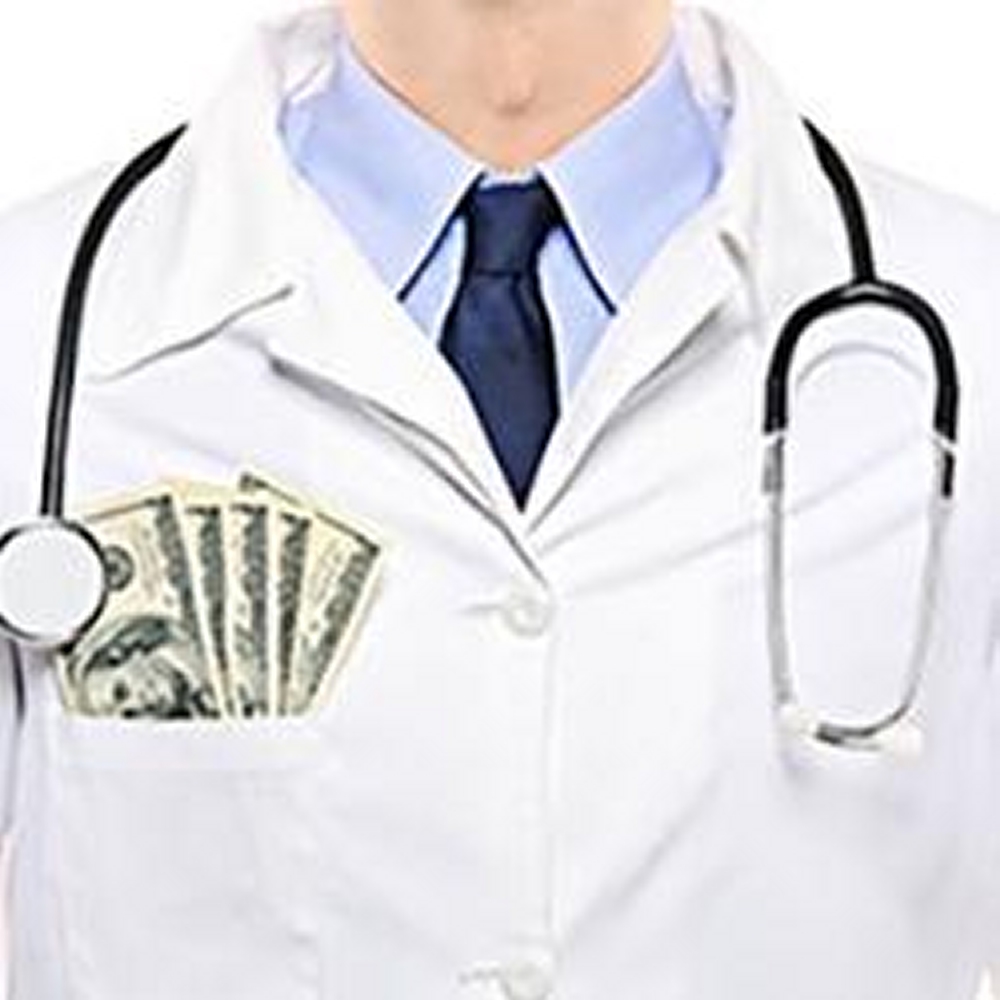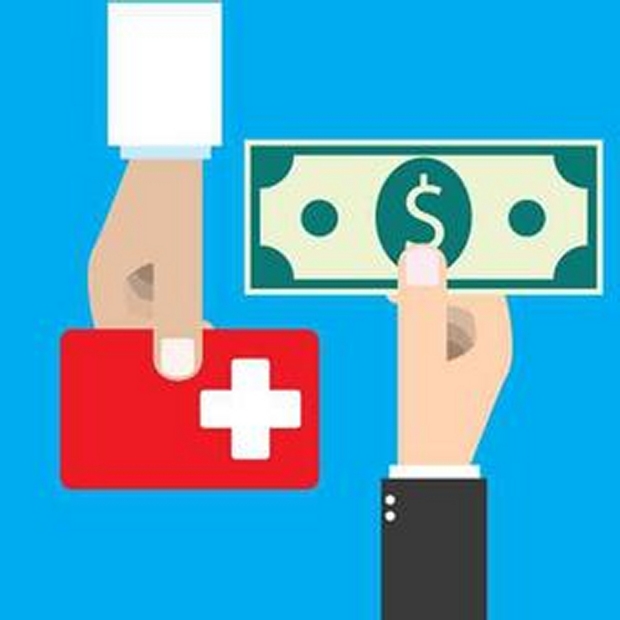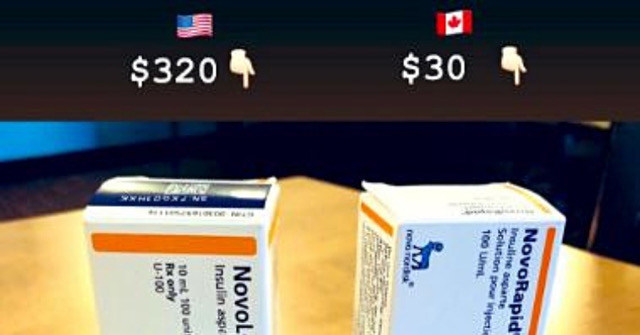
Welcome to the upside-down world of healthcare where patients are an after-thought and profits are king. Last year the U.S. spent an outrageous $3.75 trillion (18% of GDP) on healthcare — way more than any other country on the planet. What did all that money buy? A dismal 27th ranking in the health of its people, the bottom tier of the 36 highly developed OECD countries (Organization of Economic Cooperation and Development).
What does it mean to American patients to have the most expensive healthcare system in the developed world? A longer life? Afraid not. Just the opposite — life expectancy in the U.S. dropped for the third year in a row in 2018. (Time Magazine, 11/29/18). Another marker — the prevention of killer diseases and conditions. The U.S. has one of the poorest track records in the developed world treating heart disease, diabetes, respiratory disease and infant mortality. (The Wall Street Journal, 8/1/2018).
Over the last four decades, what passes for healthcare in the U.S. has steadily deteriorated— from a diversified group of individual practitioners and small, medium, and larger medical practices giving patients access and choice into a highly centralized system owned and operated by a few large hospitals. A profitable maneuver for the bottom lines of hospitals, doctors, drug companies and companies selling clinical services (blood tests, imaging services etc.) Patients are the victims in this new world. Forced to choose among a few giant practices, prevented from seeing more than one doctor in the same specialty and burdened with the ever-rising cost of their premiums, deductibles and copays, patients have been on the receiving end of a 2000% in their healthcare since 1945 (three times more than the increase in the consumer price index). In 2018, the healthcare boondoggle cost each American an unbelievable $11,212 per person.
In this Hobbesian free market, doctors take home twice as much as physicians in every other wealthy country. With more than 900,000 doctors in the U.S., the $3.75 billion price tag includes $100 billion in excess doctors’ salaries. The next time you are stuck in the waiting room of your PCP for over an hour only to be hustled out of the doctor’s treatment room after 11 minutes (time allotted for a doctor’s visit in most large practices) remember that you are paying the price both in dollars and time for the most expensive healthcare system in the world that isn’t getting the job done.

The ways the healthcare industry gets rich off patients are many and varied. Their biggest coup is their new-found alliance with the (criminogenic) finance industry. By persuading patients to have expensive (and often unnecessary) procedures that their insurance would not cover or would require unaffordable copays and deductibles, providers get a lucrative pay day and payment up front. Patients get a financial noose around their neck. Here’s how they do it.
| Patricia G. is a 78-year-old widow on a limited income. She was in desperate need of dentures costing an unaffordable $5,700. Her dentist promptly turned her over to his office manager who took her financial details and presented her with a line of credit (aka personal loan) to cover the cost. The results were predictable. Her dentist got his money upfront. Patricia’s loan came with a 23% interest rate with a penalty fee of 33% (about $50) if she was late or missed a payment. What seemed like manna from heaven turned into a financial catastrophe. Patricia must pay $214 to the finance company every month, one-third of her social security. “I am worried that I will be paying for this until I die.” |
Financial skullduggery by the healthcare industry boils down to outright invasion of privacy. As insurance premiums climb for both employers and individuals, more of the costs of healthcare are being dumped on patients. Hospitals and large medical practices want to know before they treat patients if they are good credit risks. To that end, medical practices and hospitals fork over big bucks to data mining companies like PatientMatters that analyze information from Electronic Health Records, and financial data from credit agencies to report on the credit status of (potential) patients. To leave no stone unturned, outfits like PatientMatters have managed to access the records of hospital emergency rooms.
When all else fails, the creative billing geniuses in hospitals charge real fees for imaginary expenses—
| Janet W needed day surgery to have a melanoma removed from her back. She expected her employer’s insurance to cover most of the cost. Several weeks before her surgery she received a letter from her doctor’s medical practice which was owned by one of the major hospitals in her city informing her that she was on the receiving end of a get-rich-quick scam. In a one sheet bulletin titled ‘NOTICE OF POTENTIAL FINANCIAL LIABILITY,’ JW learned that the hospital which operated the surgical center was announcing a new separate hospital facility fee… “Your financial liability may be greater than if you received these services in a facility…not hospital based.” When Janet contacted her insurance company, she was told that her copayment for the “facility fee” would be substantial. Because she didn’t dare delay the surgery, she reluctantly decided to proceed. |
In a provocative exception, the letter was aimed at “Patients NOT covered by Medicare, Medicaid, or Worker’s Compensation Insurance.” Another indication of the need for nationwide single payer national health insurance where nonsense fees would be disallowed by government plans as arbitrary, costly, and unnecessary.
However much, the healthcare industry uses scams, corrupt practices and unnecessary procedures to fatten their bottom lines, they don’t hold a candle to the king of the robber barons, the titans of the drug industry. By raising the prices on older drugs and producing “new” drugs virtually identical to ones already on the market but at prices two or three times higher, in 2018 alone, the drug industry pocketed $360 billion. Left to fend for themselves, Americans are seeing their coverage for prescription drugs shrink every year. The situation is so dire that many desperate patients turn to crowd funding to pay for the drugs and medical care they need. ““more than 50 million donors contributed more than $5 billion to GoFundMe [health-related] campaigns between 2010 and 2017.” (Jeffrey Young, HuffPost)
For the more than thirty million Americans who have diabetes and need insulin, the greed of the drug companies is wreaking havoc with their lives. “The price for one vial of Eli Lilly’s Humalog surged from $35 in 2001 to $234 in 2015. From 2013 to this year, Novo Nordisk’s Novolog jumped from $289 to $540 and Sanofi’s Lantus from $244 to $431…” (Senate Finance Committee Hearing, 2019).

For 7.5 million diabetics, a trip to Canada can be a lifesaver. Why Canada? Because price caps and negotiations with drug companies, keep drug prices low — “something the U.S. could do.” (Barry Power, Canadian Pharmacists Association).
Quinn Nystrom, a 33-year-old Type 1 diabetic, traveled to Canada in a caravan of over one hundred diabetics needing insulin —
| “It felt like we were robbing the pharmacy…” Despite being insured by her employer Quinn could not afford the insulin that was saving her life. When she was first diagnosed in the 1990s, her family paid about $15 to $20 a vial. Now, at 33, she was being charged more than $300 for the same amount. In desperation, she joined a “caravan” making its way to Canada filled with people like her needing medication they couldn’t afford in the U.S. The same amount of insulin that would have cost her $12,000 in the U.S was $1,200 in Canada. |
“It felt like we were robbing the pharmacy…” Despite being insured by her employer Quinn could not afford the insulin that was saving her life. When she was first diagnosed in the 1990s, her family paid about $15 to $20 a vial. Now, at 33, she was being charged more than $300 for the same amount. In desperation, she joined a “caravan” making its way to Canada filled with people like her needing medication they couldn’t afford in the U.S. The same amount of insulin that would have cost her $12,000 in the U.S was $1,200 in Canada.
Exceptional America taking home the gold for the most expensive healthcare in the world winds up at the back of the pack when it comes to effectiveness. With longevity going backwards, American patients dying prematurely from a host of illnesses and 250,000 felled by medical mistakes every year (Johns Hopkins study), the U.S. broken down medical system is on life support. After the Obamacare “deforms,” medical debts remain the leading cause of U.S. bankruptcies. The only “miracle” of miracle drugs and procedures is how miraculously they empty patients’ wallets. Where else but in the U.S. would 80% of states’ Attorneys’ General feel compelled to file suit accusing drug companies of mass price gouging, in some cases raising the price of drugs 1000%? “Multi-billion-dollar fraud on the American people…” (William Tong, CT attorney general)
Since 2016, more than half the U.S. adult population has favored single payer health insurance. Today, six in ten want Medicare-for-all. The healthcare industry, the drug companies, doctors, hospitals, and their followers, are solidly opposed. Spending extravagantly to keep the gravy train rolling, healthcare-related lobbying totaled $555 million in 2017 (OpenSecrets.org), far outpacing any other industry. The stakes are high. For healthcare honchos trillions. For patients, their well-being and in too many cases their lives. How much longer can the U.S. get away with being the only developed country on the planet that rations healthcare based on ability to pay? How much longer will American swallow whole the proposition that healthcare is not a right but a path to “socialized medicine”? it’s time to take the blinders off.
749 total views, 1 views today
